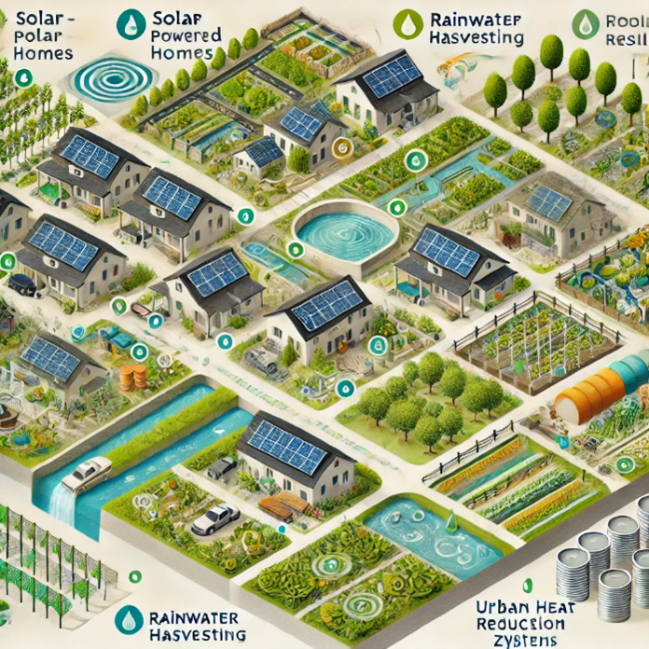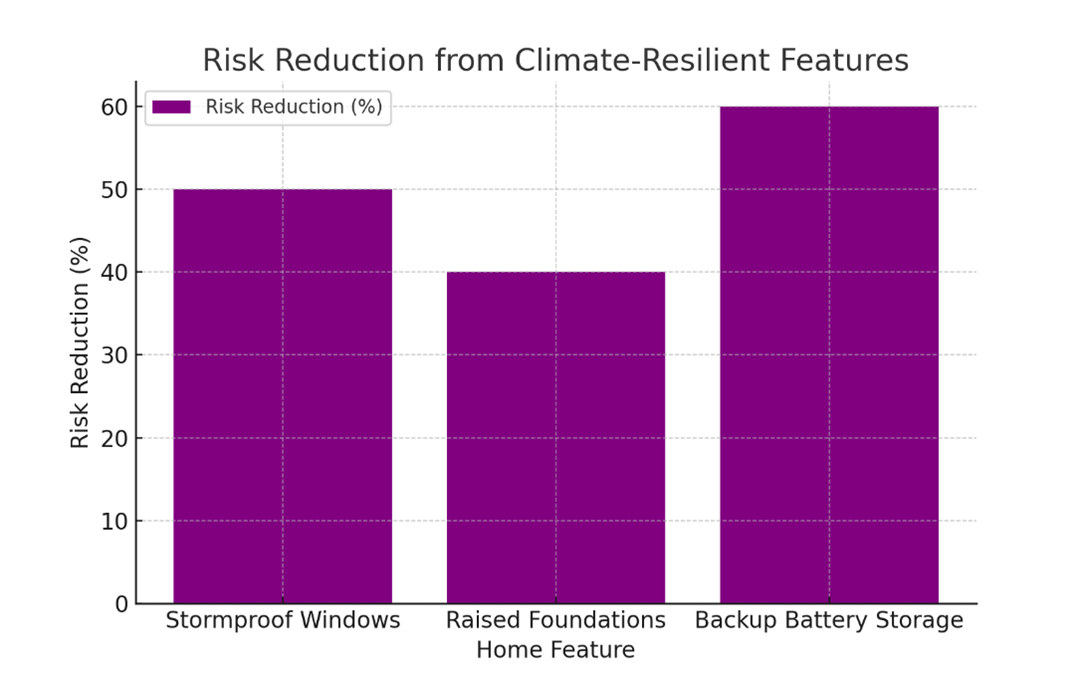Building Climate-Resilient Homes and Communities
Climate Resilience ?? Comments 08/Jun/2025 SunClimate change has brought increased risks of extreme weather events, such as hurricanes, floods, wildfires, and heatwaves. Building climate-resilient homes and communities involves incorporating features and practices that reduce vulnerability to these risks while promoting long-term sustainability. These adaptations not only protect lives and property but also enhance energy efficiency and self-sufficiency.
Details
-
Features of Climate-Resilient Homes
o Raised Foundations:
-
Homes in flood-prone areas benefit from elevated foundations, which reduce the risk of flood damage during heavy rains or storm surges.
-
Types of raised foundations include pier-and-beam designs or homes built on stilts, which allow water to flow beneath the structure.
o Stormproof Windows and Doors:
-
Installing impact-resistant windows and reinforced doors protects homes from high winds and flying debris during hurricanes or severe storms.
-
Window features, such as double-glazing and laminated glass, also improve insulation, enhancing energy efficiency.
o Hurricane-Resistant Shutters:
- Shutters made from materials like aluminum or polycarbonate provide an additional layer of protection for windows during storms. They are a cost-effective way to mitigate wind and debris damage.
o Renewable Energy Systems:
-
Solar panels paired with battery storage systems provide backup power during outages caused by extreme weather.
-
Systems like Tesla Powerwall or Enphase Energy storage ensure that critical appliances, such as refrigerators or medical devices, remain operational during blackouts.
o Wildfire-Resilient Materials:
-
In wildfire-prone areas, building homes with fire-resistant materials like metal roofing, cement siding, and tempered glass windows minimizes fire risks.
-
Creating defensible space by clearing vegetation around homes adds an additional layer of protection.
o Cool Roofs and Heat-Resistant Insulation:
-
Cool roofs reflect more sunlight and absorb less heat, keeping homes cooler during heatwaves and reducing the demand for air conditioning.
-
Heat-resistant insulation ensures indoor temperatures remain stable, lowering energy consumption during extreme weather.
o Permeable Landscaping:
-
Incorporating permeable materials for driveways, walkways, and patios allows rainwater to be absorbed into the ground, reducing the risk of flooding.
-
Planting native vegetation that can withstand droughts and heavy rainfall contributes to overall climate resilience.
-
-
Community-Level Resilience Features
o Microgrids and Distributed Energy Systems:
-
Communities can adopt localized energy systems, such as microgrids powered by solar or wind energy, to maintain power during widespread outages.
-
These systems enhance energy independence and reduce reliance on centralized utilities.
o Green Infrastructure:
-
Communities can implement green infrastructure like rain gardens, bioswales, and retention ponds to manage stormwater and reduce urban flooding.
-
Tree planting programs create urban canopies that provide shade, reduce heat islands, and improve air quality.
o Shared Resources for Emergency Preparedness:
-
Community centers equipped with backup power and supplies can serve as shelters during extreme weather events.
-
Neighborhoods can organize mutual aid networks to assist vulnerable residents, such as the elderly or those with disabilities, during emergencies.
-
Practical Example
A Household’s Climate-Resilient Upgrades
• Scenario: A family living in a hurricane-prone region decides to prepare their home for extreme weather events while enhancing its sustainability.
• Steps Taken:
-
The family installs hurricane-resistant shutters on all windows and doors, protecting their home from wind and debris damage during storms.
-
They add solar panels paired with a battery storage system, ensuring backup power for essential appliances, such as refrigerators and communication devices, during power outages.
-
To reduce flood risks, they elevate their HVAC system and electrical outlets several feet above the ground.
-
The family also plants drought-resistant native vegetation around their home to minimize water usage and improve soil stability during heavy rains.
• Outcome:
o The household’s resilience to hurricanes improves significantly, reducing potential repair costs after storms. o Their solar panels with battery storage provide reliable energy, saving them $1,500 annually on electricity bills while offering peace of mind during outages. o The combination of flood protection and sustainable landscaping reduces the family’s vulnerability to future climate risks.
Key Benefits of Climate-Resilient Homes and Communities
-
Protection Against Extreme Weather:
Homes with resilient features withstand storms, floods, and heatwaves more effectively, minimizing property damage and associated costs.
-
Energy Independence:
Renewable energy systems and microgrids reduce reliance on external power sources, ensuring reliability during outages and contributing to sustainability.
-
Long-Term Cost Savings:
Investments in resilient materials and systems lower energy bills, reduce repair costs, and enhance property value over time.
-
Community Well-Being:
Resilient communities are better equipped to support residents during emergencies, fostering safety and solidarity.
-
Environmental Benefits:
Features like green infrastructure and renewable energy systems reduce the carbon footprint of homes and communities, contributing to climate change mitigation.
By incorporating climate-resilient features into homes and communities, individuals and neighborhoods can better prepare for the challenges of a changing climate while promoting sustainability and self-sufficiency.
• Map of a climate-resilient community layout.
o Homes with solar panels and backup batteries.
o Community center with stormproof windows and renewable energy systems.
o Rainwater harvesting systems in gardens.
o Raised foundations in flood-prone areas.
o Green spaces to absorb heat and reduce urban warming.

